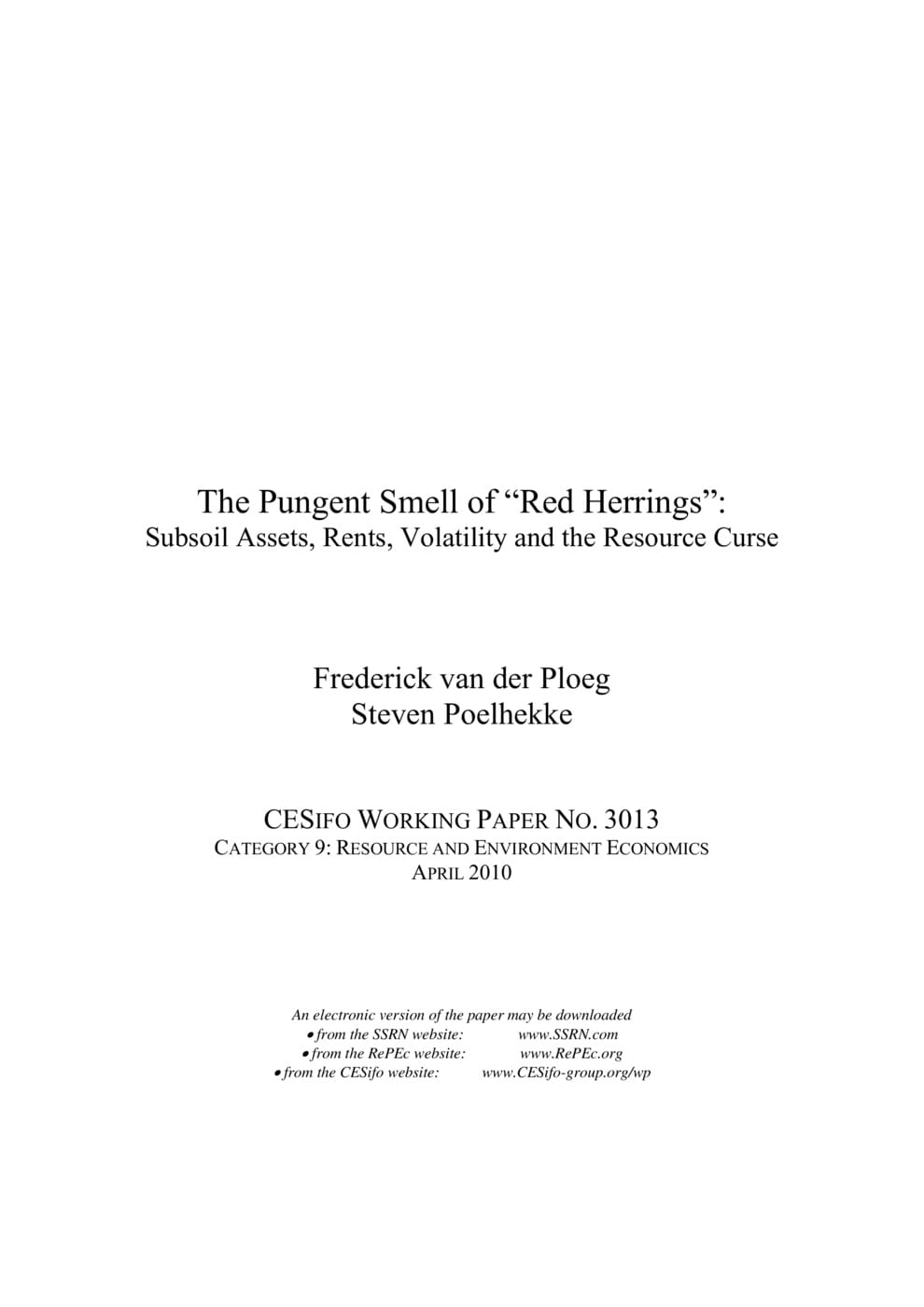The Pungent Smell of "Red Herrings": Subsoil Assets, Rents, Volatility and the Resource Curse
CESifo, Munich, 2010
CESifo Working Paper No. 3013

Brunnschweiler and Bulte (2008) provide cross-country evidence that the resource curse is a “red herring” once one corrects for endogeneity of resource exports and allows resource abundance affect growth. Their results show that resource exports are no longer significant while the value of subsoil assets has a significant positive effect on growth. But the World Bank measure of subsoil assets is proportional to current rents, and thus also endogenous. Furthermore, their results suffer from an unfortunate data mishap, omitted variables bias, weakness of the instruments, violation of exclusion restrictions and misspecification error. Correcting for these issues and instrumenting resource exports with values of proven reserves at the beginning of the sample period; there is no evidence for the resource curse either and subsoil assets are no longer significant. However, the same evidence suggests that resource exports or rents boost growth in stable countries, but also make especially already volatile countries more volatile and thus indirectly worsen growth prospects. Ignoring the volatility channel, may lead one to erroneously conclude that there is no effect of resources on growth.
Resources and Environment